Kavala – Oil Pulling
AS PER AYURVEDIC TEXTS:
Charaka Samhita explained only kavala graha but Sushruta Samhita and Vagbhata’s Ashtangha Samhita and Samgraha explained gandusha and kavalagraha. According to them the difference is only in the dosage of the drug.
Gandusha is
Holding of medicated fluids in the mouth in full quantity for a specific time and then expel it out (because of full quantitiy, the fluid cannot able to rotate in the mouth)
Kavalagraha is
Medicated fluids are kept in the mouth in less quantity and asked to rotate in the mouth for a specific time and then expelled out
Su Ch # 40 – 58.
According to Sarangadhara, Kalka (medicated bolus) drugs are used in kavala and liquids are used in gandusha.
Sharangdhara 4th 1-4
Kavala is of four types:
According to Sushruta
1) Snehan
2) Prasadana
3) Shodhana
4) Ropana
According to Vagbhata.
1) Snigda
2) Shamana
3) Shodhana
4) Ropana
Which one are you doing? Do you have any idea or are you following what the popular fad is just telling the sheep to do? Coconut oil? 20 minutes? Baaaaaaa. One size fits all and that is the opposite of Ayurveda.
Lubricating with oils and fats (snigda) AKA Snehana or Snigda gandusha (nourishing, lubricating)
The drugs should be snigda, ushna, madhura, amla lavana (used in vata prakopa). The medicine should mix with other vata hara sneha, mamaaras etc., items Vata imbalance disorder. It is done by the use of oil processed with herbs of sweet, sour and salt tastes. Not cold and heavy coconut oil.
Palliative (shamana) AKA Shamana gandusha (mitigating)
Drugs should be prepared with tiktha, kashya and madura rasa for pitta shaman of pitta disorders. But in pradana, shita for pitta shaman. They both are one and same but explained by different authors for pitta shaman. It is done by herbs of bitter, astringent and sweet tastes.
Cleansing / detoxing (shodana) aka Shodhana gandusha (purifying)
Drugs should be prepared with tikshna, ushna, ruksha, katu, amla, lavana rasa for kapha shamana. The gomutra, madya, shuktha, madu, dhanyamala, etc… should be used along with medicines for kapha imbalance disorder. It is with herbs of bitter, pungent, sour, salt tastes and possessing hot property. Not cold and heavy and sweet coconut oil.
Healing (ropana) AKA Ropana gandusha (healing)
Drugs should be prepared with ushna, kashaya, katu, madura, rasa, for vrana ropana (ulcer healing). The ghrita, ksheera, sneha dravya are used along with the drugs.
Regular gandusha is good for
1) Swara balam (strength to voice)
2) Hanu balam (strength to jaws)
3) Strength to face
4) Ruchyam (better taste perception)
5) Oruda dantha (strong and healthy teeth )
6) Stamina against ooshaja or aaganthuja mukha rogas, shiro rogas (head diseases), karna rogas (ear diseases). nasa roga (nose diseases) and netra roga (eye diseases).
“Benefits of oil pulling with sesame oil daily: Sesame oil gargling is beneficial for the strength of jaws, depth of voice, flabbiness of face, excellent gustatory sensation and good taste for food. One will never get dryness of throat, nor does his lips ever get cracked; his teeth will never develop caries and will be deep-rooted; he will not have any toothache nor will his teeth set on edge by sour intake; his teeth can chew even the hardest eatables”
Reference: Charaka Samhita Sutrasthana 5
BTW….. Charaka Samhita in Ayurveda was the first to explain the connection between the Ears, Nose, and Throat in medicine.
What are the indications for gandusha?
Manya Stamba (neck rigidity)
Shira shula (head ache)
Karna shula (otalgia)
Mukha roga (diseases of osta, danta mula (root of teeth), danta (teeth), jihva (tongue), talu (palete), gala (esophagus, throat)
Netra roga (eye diseases)
Lala srava (salivation)
Mukha sosha (vataja disorders of mouth)
Hrullasa (nausea)
Tandra (sleeping mood)
Aruchi (loss of hunger / tasteless-ness )
Pinasa (rhinitis and head cold)
Siro roga (head diseases)
How is each treatment done?
Gandusha is a process having major importance in the management of mukha rogas (mouth diseases). It is a special process as well as pashcyath karma to nasya karma (nose), vamana karma (purification process of vomiting), etc. to save the body from the complications of kapha dosha.
1) Preparation of the patient for gandusha
2) Preparation of the medicine according to the condition of the patient.
a) Example. Triphala, trikatu, panchavalkala, dashamoola, vacha, yastimadu, etc,. drugs should be grinded to prepare kalka (bolus or paste) to keep in the mouth or to rotate in the mouth.
b) Liquid medicines
Like ghrita, taila, madhu, water, madhya, mamsa rasa, gomutra, decoctions of medicines, shukta, kanji etc., drugs.
c) According to the vitiation of doshas either kalka or kashaya or mixed should be selected for the therapy
3) Gentle oil massage is done
4) Light fomentation of lat neck, cheek, face, head, shoulders, etc.
5) Sit in a chair with comfort and then the medicine is held in the mouth or rotated up to the specific time of the samyak lakshanas (signs of proper treatment) then the medicine should be spit it out. Pashchyath karma or other gandusha should be given.
6) Again gentle massage and light fomentation at neck, face, cheeks, shoulders, head etc.
How long should the treatment be done?
The medicated fluids should kept in the mouth up to the manifestation of following symptoms
1) Collection of kapha in the mouth
2) Nasa Srava (runny nose)
3) Karna Srava (liquid from ears)
4) Netra Srava (eyes tear and cry)
Then the drug should be expelled out. Then new drug should be kept in the mouth or pashchyath karma has to be done according to the condition of the patient.
Samyaka yoga lakshanas of gandusha (symptoms of proper gandusha)
1) Relief from the disease or symptoms
2) Freshness of face, all indriyas (senses), and mind
3) Lightness of the body
4) Sound sleep
5) Normal taste, appetite, digestion capacity and general health
Atiyoga lakshanas of gandusha (Symptoms of excessive gandusha)
1) Shosha (dryness of mukha etc., srotas)
2) Daha (burning sensation)
3) Paka (ulceration)
4) Trishna (thirst, which is a disease state in Ayurveda)
5) Aruchi (loss of taste)
6) Klama (debility and weakness)
Asamyak yoga lakshanas of gandusha (Symptoms of inadequate gandusha)
1) Alastva (lazyness)
2) Aggravation of the disease
3) Kapha vitiation
4) Aruchi (tastelessness)
5) Hrullasa (nausea)
6) Tandra (inactive state or sleepy mood)
Yes. You can actually create a disease doing this treatment wrong.
Different substances are used in kavala in Ayurveda:
Fats – sesame oil, ghee, different animal fats
Milk
Honey with water
Fermented gruel
Wine (not western wines)
Meat soup (meat soup is the juice without the meat)
Urine of animals such as cow urine (yep, really)
Dhanyamla – Sour fermented grain liquid, like a beer almost
And then of course the medicines which are blend of substances for specific purposes
For daily use, oil pulling should be used with sesame oil or meat soup
Hot water gandusha in general kapha disorders of the mouth
Gandusha with kanji or dhanyamla is used in aruchi
Daruharidra rasa kriya or triphala kashaya is used in ulcerations and wounds in mouth
Trikatu, mustard oil, haritaki kalkam + alkali water gandusha isused in kaphaja mouth diseases
Seasame seed paste added to water in tooth pain
Ghee or milk gandusha in pittaja mouth diseases
Ksheera vruksha kashaya is used in bleeding gums
Decoction of kasisa, lodra, long pepper, manahshilla, priyangu, tejohva + honey, is used in pyorrhoea (pus discharge from gums)
Pancha pallava kashaya + ghee + honey + sugar gandusha in (gingivitis) upakusha
Irimedadhi oil or sahacharadi taila or mustard oil or narayana taila or prasarini taila in gum disorders
The decoction of lodra, musta, jatamamsi, rasanjana, patranga all mixed together with honey, is used in saushira and diseases of the root of teeth
Patola, nimba, triphala kashaya is used in gum disorders
Dashamoola kashaya and sesame oil is used in diseases of the teeth
Trlkatu, mustard oil, saindhava lavana is used in kapha tongue diseases
Alkali water (not alkalized water) is used in kapha mouth diseases
Sesame oil is better to do daily to prevent diseases of the mouth
Licorice kashaya is used in mouth ulceration diseases and wounds
Kakolyadi or vidarigandhadi ghee is used in pitta mouth diseases
The proper use of the treatment is diagnosed and treatment depends upon what it is being used for the person and their imbalance state and the disease.
The person should sit in a place devoid of breeze but in mild sunlight. At the right time of day as per the doshakala.
It is never done when the sky is overcast or it is raining.
The patients shoulders and neck should be massaged with the proper oil and then fomented depending upon the treatment and why it is being given.
After fomentation then treatment of gandusha or kavala is done
Keeping the face slightly lifted up, one should hold the liquid in their mouth or swish/gargle the oil till the mouth gets filled with Kapha (sputum / slimy liquid / mucus) and till the nose, eyes and/or ears start secreting liquid. Not 20 minutes. Each individual will be different and this is the sign that it is done completely as this is what it is being used for.
Then the contents of the mouth are spit out.
Then smoking of specific herbs (dhumapana) is done. Not as per Western idea of smoking. (no this makes no sense to the western paradigm but does in Ayurveda and from and India paradigm)
Then tambula is chewed.
This is real Ayurveda. What your reading on the internet in tweets and the ezines…. wow. How does it actually compare to this? (blonde jokes come to mind)
The treatment will vary individually as per the person and what they are using it for.
There is no pulling of toxins/detoxifying except when it is used as a shodana treatment. At best what is written in all the mass ezines and blogs out there can kind of be said to be a palliative treatment, but in even that coconut oil would never be used as it is opposite qualities that would need to be used as per Ayurveda. Also, coconut is not local to most of the general masses in the West, this is also against Ayurvedic knowledge. Basically what is being done out there is a blind following of an uneducated popular fad. Everything in Ayurveda is seen from the viewpoint of the individual’s balance and imbalance which is a totally different vantage from the Western allopathic mindset which is inherent in the unconsious mind of the culture.
Kavala is used for neck, jaw, eyes, nose, throat, gum, teeth, sinus problems when used properly but can easily create diseases of the same when used improperly.
Most importantly, it is to never be used in cases when someone has aama (if you look at your tongue and it has a white film or thick plague, it is signs of toxicity and lack of digestion) or the following as well……. poisoning, fainting disease, alcoholism, depletion, TB, bleeding diseases, low clotting factor, inflammation of the eyes, constipation, depletion of wastes and other contraindications.
NOTICE NOT ONE WORD OF COCONUT OIL ANYWHERE BELOW……
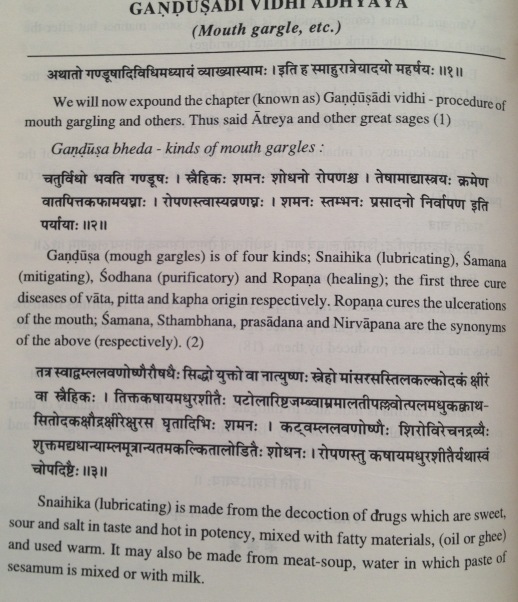

no, alkaline water from your water purifier is not what is meant in the 8th verse.


Another text……….
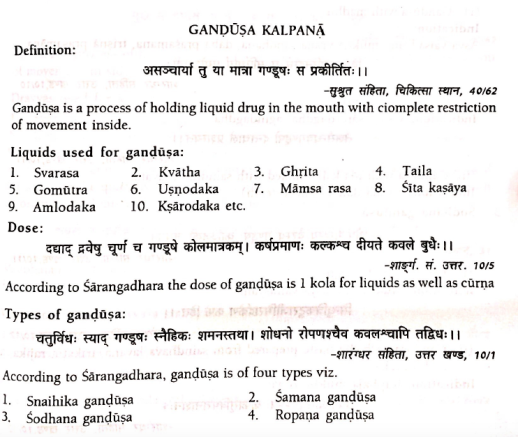
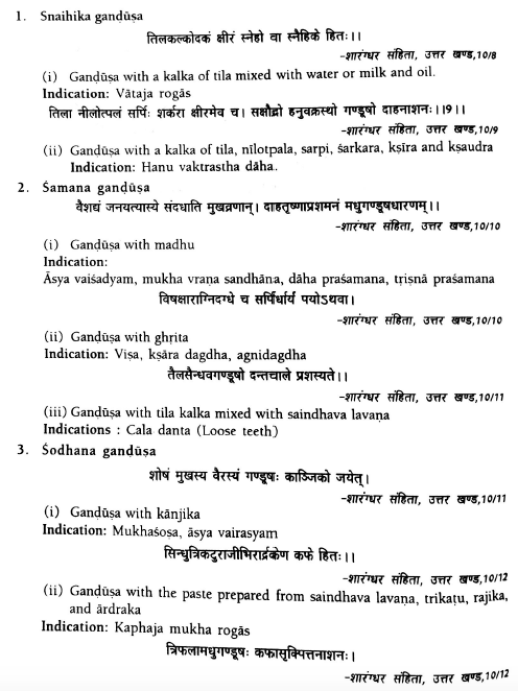
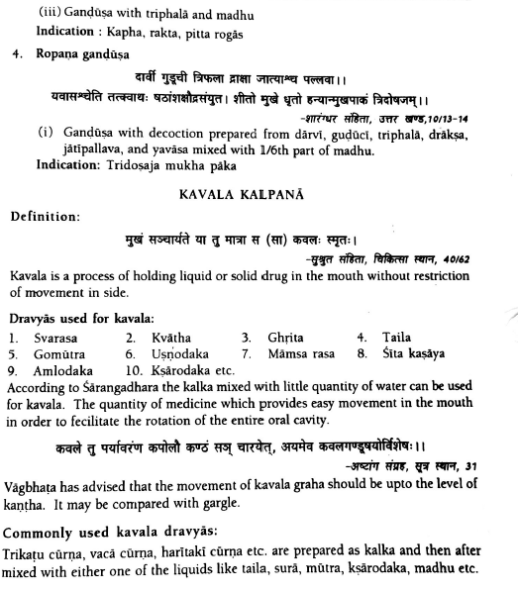
and just one more…..

So there you have it, nothing at all like what you get from all the ezines and Western professional ayurvedic practitioners blogs, huh? There is a great deal difference in the knowledge of real ayurveda suffice to say.



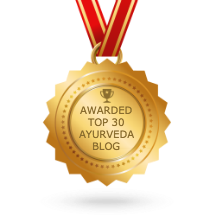
Pingback: Oil Pulling: An ancient Ayurvedic treatment, or is it? | trueayurveda
Thanks.
Kshara is alkalies. That is why I wrote not alkalized water, meaning the water that is popular and not healthy today. Alkalies added to the water to be used for specific reasons.
There you go.
great article…just had asked about oil pulling and its origins in an ayurveda group on fb and got all kinds of replies that had nothing to do with the text…appreciate your thoroughness here. wondering what they mean by alkaline water…never saw that reference before?
My gums are very sensitive from years of improper care. I’m 26, but admittedly am horrible at oral hygiene. My gums will bleed a lot when brushing and flossing is even worse. During the day I might find blood in my salvia. Does this count as a “bleeding disease”? Or a vata imbalance? I have been oil pulling with warm sesame oil for about 3 weeks first thing in the morning after going to the bathroom, and have been seeing improvements. No blood unless brushing or flossing, but that has decreased a lot.
The only guideline from the text I can follow is daily warm sesame oil, do you think I should stop? There’s no way I can do it in the sun right now, maybe on weekends, but it’s quite breezy right now. I do think I have quite a bit of amaa as well, my urine is quite strong smelling. Thanks Brad.
Aama is always a problem. Oil and aama do not mix. I would tell you to get rid of the aama before doing any technique is not wise as it will increase the aama.
The sesame oil is not actually a wrong oil in this case. You would need to be using herbs that are stambhana or that will stop the bleeding.
Perfect, thanks. I am reading your post on a daily morning routine. I’ve known about the problem with sweet toothpaste from this blog, for a while now, I’m thinking I will get my hands on some. Namaste.
So only healthy people without aama can do the oil pulling? Even the basic sezame one?
Yes. Oil pulling with aama is creating disease.
Hi! An eye opening article. I started doing oil pulling 3-4 days back with coconut oil as its benefits are there all over the Web. But as you have explained that oil pulling should never be done with coconut oil I’m confused.
I first started with sesame oil (i immediately had some good effect like reduced lower back pain and less cramps) but after pulling 3 times I had an allergic reaction and had to take an anti allergic tab and stop with sesame oil.
Now i m confused which oil to continue with? … olive oil or sunflower oil?
The article pretty much says everything you need.
Kinda hard to answer anything when someone says that doing oil pulling has relieved their back pain. It cannot in anyway. Notice that the article started out with that the Western world of woo woo craziness has made it into something it is not.
Reread the actual textual references as to the benefits….. then I ask you to find the references that those “benefits are there all over the Web” are writing from. I had a guy even say that oil pulling cured his gout.
To answer your question, I would tell you to discontinue all together with oil pulling, do not worry about what oil to use. If your having allergic reactions, you have deeper issues that would need to be dealt with and I seriously doubt that oil pulling is gonna be beneficial. Why are you doing oil pulling in the first place?
But, for a regular use(to protect my teeth) as a dinacharya, I couldn’t understand, what should I do..?
will seasame oil gargling suffice ?
Can you please explain acharya?
Thanks for the question for clarity…..
Yes, you can do it daily with sesame oil as part of dinacharya. Generally.
hello sir, I’ve amavata of upper back muscles and also suffering from dental erosion. Which gandusha can i use as you’ve mentioned not to do gandusha/kavala in ama condition. Even I experience heaviness in back muscles and jaw muscles after doing kavala with triphala/yashtimadgu/til tela. Please suggest.
If you have amavata oil is contraindicated.
hi.i accept your point. but why this ayurvedic doctors are not recommending this method.my ayurvedic doctor had been giving me bundle of medicines for last 4 years.when i tried using oil pulling ( i got this idea from a western article)method within 1 week i stopped all the medicines. i had had arthritis issues also , now got too much relief also.So pls dont blame anyone without knowing the fact.
Not all Ayurveda doctors are well educated. Personally with my almost 10 years of living in India and most of that in the view of how the BAMS curriculum is and the level of knowledge when the ‘doctors’ become doctors, as well as my experience of what is being done in the name of ayurveda in India, I am sceptical of everything…… only because of my experience and knowledge. Your speaking from your own experience. Is it educated? No, just an opinion. But I do appreciate that you have had relief from your symptoms. The point, your so called ayurveda doctor was not correct in diagnosing your condition or it would have been treated properly. Realize this.
First all all thanks and applause.
There are many articles over internet mostly copy paste.
Every time it gets paste author adds his her own understanding.
I appreciate you for putting original reference. This is what makes a post relevence and unbiased.
Thanks for writing
It’s very useful. Informative…..